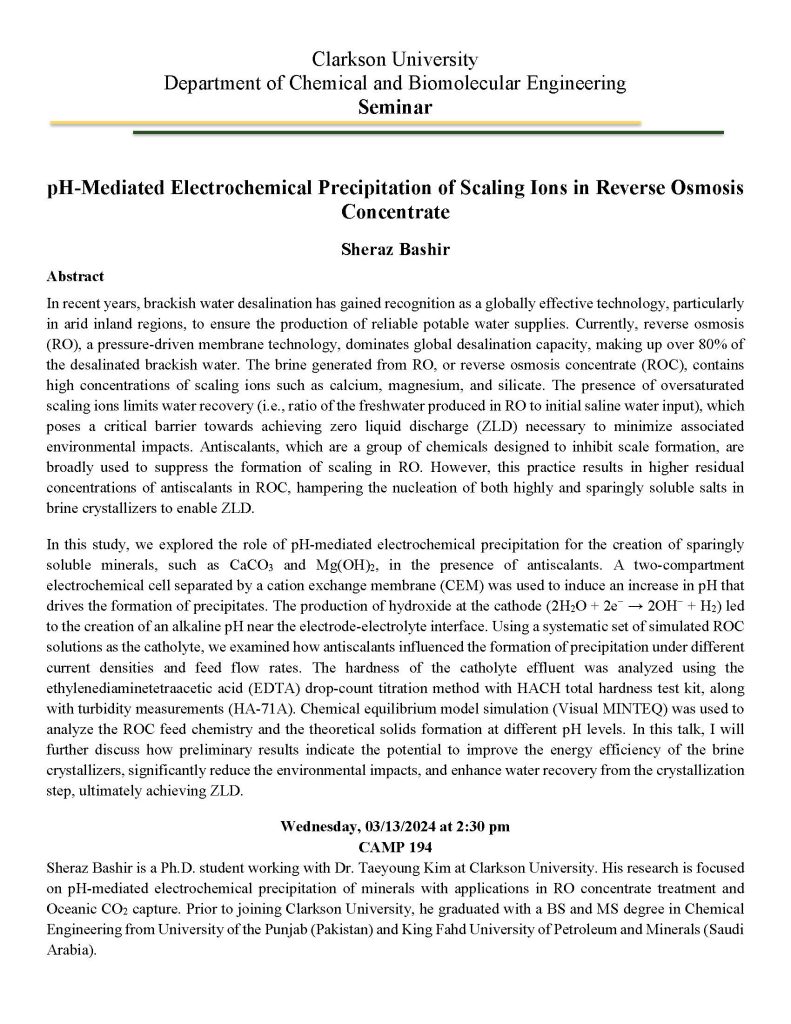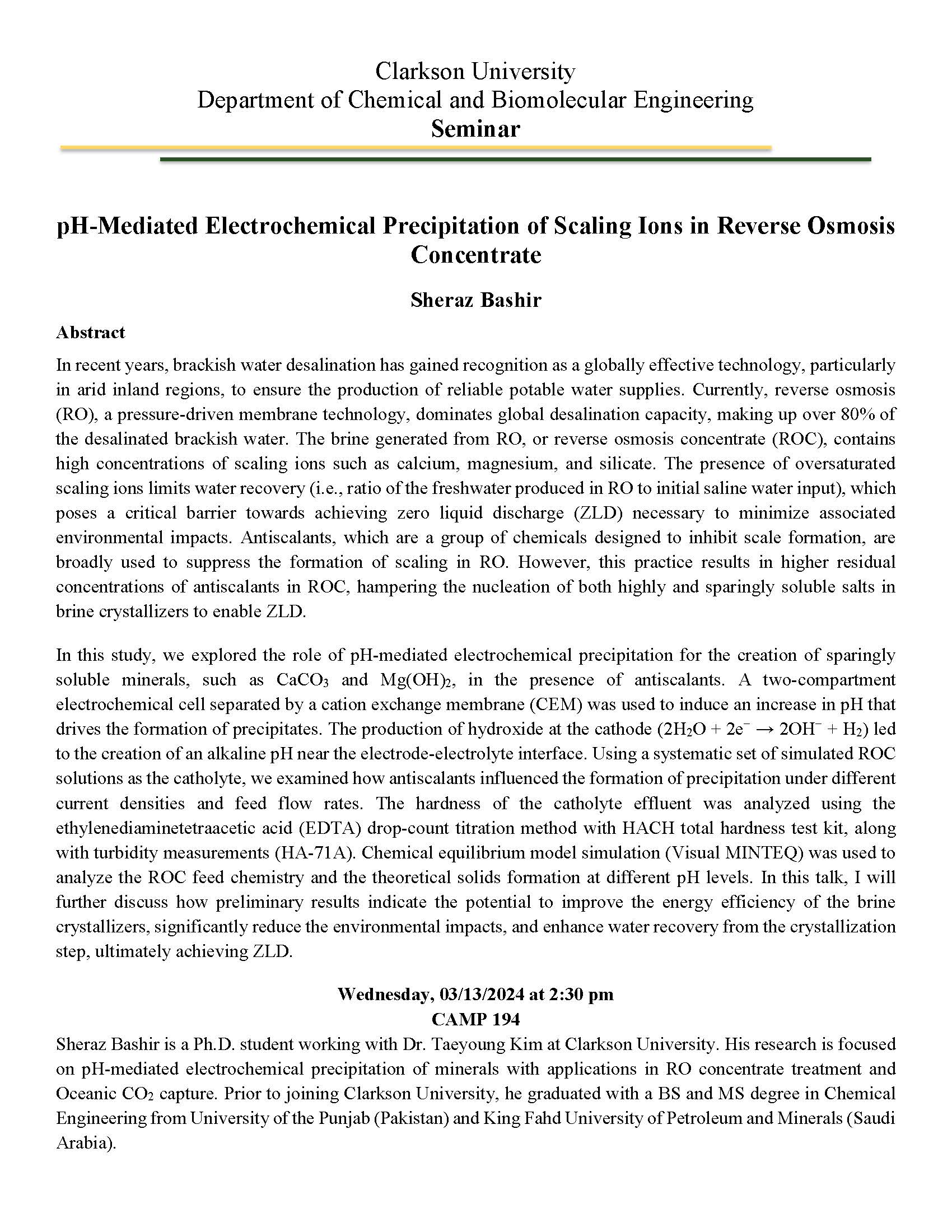
Clarkson University
Department of Chemical and Biomolecular Engineering
Seminar
pH-Mediated Electrochemical Precipitation of Scaling Ions in Reverse Osmosis Concentrate
Sheraz Bashir
Abstract
In recent years, brackish water desalination has gained recognition as a globally effective technology, particularly in arid inland regions, to ensure the production of reliable potable water supplies. Currently, reverse osmosis (RO), a pressure-driven membrane technology, dominates global desalination capacity, making up over 80% of the desalinated brackish water. The brine generated from RO, or reverse osmosis concentrate (ROC), contains high concentrations of scaling ions such as calcium, magnesium, and silicate. The presence of oversaturated scaling ions limits water recovery (i.e., ratio of the freshwater produced in RO to initial saline water input), which poses a critical barrier towards achieving zero liquid discharge (ZLD) necessary to minimize associated environmental impacts. Antiscalants, which are a group of chemicals designed to inhibit scale formation, are broadly used to suppress the formation of scaling in RO. However, this practice results in higher residual concentrations of antiscalants in ROC, hampering the nucleation of both highly and sparingly soluble salts in brine crystallizers to enable ZLD.
In this study, we explored the role of pH-mediated electrochemical precipitation for the creation of sparingly soluble minerals, such as CaCO3 and Mg(OH)2, in the presence of antiscalants. A two-compartment electrochemical cell separated by a cation exchange membrane (CEM) was used to induce an increase in pH that drives the formation of precipitates. The production of hydroxide at the cathode (2H2O + 2e− → 2OH− + H2) led to the creation of an alkaline pH near the electrode-electrolyte interface. Using a systematic set of simulated ROC solutions as the catholyte, we examined how antiscalants influenced the formation of precipitation under different current densities and feed flow rates. The hardness of the catholyte effluent was analyzed using the ethylenediaminetetraacetic acid (EDTA) drop-count titration method with HACH total hardness test kit, along with turbidity measurements (HA-71A). Chemical equilibrium model simulation (Visual MINTEQ) was used to analyze the ROC feed chemistry and the theoretical solids formation at different pH levels. In this talk, I will further discuss how preliminary results indicate the potential to improve the energy efficiency of the brine crystallizers, significantly reduce the environmental impacts, and enhance water recovery from the crystallization step, ultimately achieving ZLD.
Wednesday, 03/13/2024 at 2:30 pm
CAMP 194
Sheraz Bashir is a Ph.D. student working with Dr. Taeyoung Kim at Clarkson University. His research is focused on pH-mediated electrochemical precipitation of minerals with applications in RO concentrate treatment and Oceanic CO2 capture. Prior to joining Clarkson University, he graduated with a BS and MS degree in Chemical Engineering from University of the Punjab (Pakistan) and King Fahd University of Petroleum and Minerals (Saudi Arabia).

